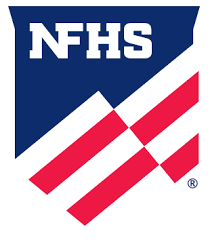INDIANAPOLIS, INDIANA (February 17, 2022) – Allowing players to wear the number 0 as a jersey number was among the rule changes coming to high school football in the 2022 season.
This is one of seven total recommendations brought forth by the National Federation of State High School Associations (NFHS) Football Rules Committee, which held its annual rules meeting January 23-25. The NFHS Board of Directors subsequently approved all seven of the committee’s suggestions.
The range of acceptable numbers listed in Rule 1-4-3 was expanded from 1-99 to 0-99. However, any number preceded by the digit zero will be illegal.
Two of the biggest on-field changes are a new rules exception that allows a passer to intentionally throw an incomplete forward pass for the purpose of conserving yardage, and the redefining of the term “chop block” – both of which are intended to minimize risk of injury.
“With this year’s rules changes, the committee once again showed its focus on minimizing risk in high school football,” said Bob Colgate, NFHS Director of Sports and Sports Medicine and liaison to the NFHS Football Rules Committee. “By expanding the parameters for a legal forward pass and redefining the chop block so it can be more easily officiated by game officials, the committee has taken measures to mitigate two potentially risky situations within the game.”
Rule 7-5-2 EXCEPTION 2 now permits a player to purposefully throw an incomplete forward pass without warranting an intentional grounding penalty provided the passer is outside of “the pocket” (lateral boundary of the free-blocking zone) and the pass reaches the neutral zone or the extension of the neutral zone beyond the sideline.
“The question (with this rule) has always been, ‘if the defense makes a good play, are we bailing out the offense by letting the quarterback throw the ball away?’” said Richard McWhirter, Chair of the NFHS Football Rules Committee and Assistant Executive Director of the Tennessee Secondary School Athletic Association. “This year, I think the committee felt the well-being of the passers and not subjecting them to extra hits was worth changing the rule.”
An alteration to Rule 2-3-8 addressed the new definition of a chop block, which is now described as “a combination block by two or more teammates against an opponent other than the runner, with or without delay, where one of the blocks is below the waist and one of the blocks is above the waist.” Previously, the defensive player’s knee was used to determine the high and low components of a chop block.
“This is going to strengthen the rule and it’s also going to help the game officials,” said McWhirter. “I think they’re going to be able to enforce this rule better than they have in the past because determining ‘below the knee’ and ‘above the knee’ is tough to do. I think it’s really going to improve the game.”
State associations now have the option to extend sideline team boxes beyond their traditional 50-yard expanse (between the 25-yard-lines) as long as both teams are allowed to use the same dimensions. This new NOTE attached to Rule 1-2-3g also gives state associations the freedom to decide which individuals can access the extended area.
Two minor changes involving game clock and play clock procedures were made to Rules 3-4-7 and 3-6-1a(1)e EXCEPTIONS, respectively.
In Rule 3-4-7, any foul committed within the last two minutes of either half will automatically result in the offended team’s option to start the game clock on the snap. Prior to this change, the offended team was required to accept its opponent’s penalty in order to gain control of the game clock.
The committee edited the EXCEPTIONS to Rule 3-6-1a(1)e, which clarify the necessary conditions for an abbreviated 25-second play clock after a stoppage in play. This rule now includes an exception for Rule 3-5-7i, mandating that a 40-second play clock be employed following a foul committed only by the defensive team.
The final rule change for 2022 is an alteration to Rule 1-3-3 regarding game equipment. Any game official – not just the referee – may order the ball changed between downs.





 Back
to News
Back
to News